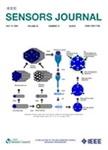版权所有:内蒙古大学图书馆 技术提供:维普资讯• 智图
内蒙古自治区呼和浩特市赛罕区大学西街235号 邮编: 010021

作者机构:Monash Univ Malaysia Dept Elect & Robot Engn Micro & Nano Devices Lab Bandar Sunway 47500 Selangor Malaysia
出 版 物:《IEEE SENSORS JOURNAL》 (IEEE Sensors J.)
年 卷 期:2024年第24卷第11期
页 面:17337-17352页
核心收录:
学科分类:0808[工学-电气工程] 08[工学] 0804[工学-仪器科学与技术] 0702[理学-物理学]
基 金:Collaborative Research in Engineering Science and Technology Malaysia (Monash)
主 题:Biosensor design gas sensor one-port surface acoustic wave (SAW) physical sensor review sensor
摘 要:Surface acoustic wave (SAW) devices have long been recognized as proficient sensors, capable of detecting an array of chemical and physical parameters. These range from the identification of gas type and concentration, the intensity of ultraviolet light, fluctuations in temperature, and changes in relative humidity. Historically, delay line model SAW devices have been the preferred choice for these sensor applications due to their proven reliability and broad versatility. However, recent advancements have paved the way for the development of one-port SAW resonators, which offer several compelling benefits. These devices are characterized by their relatively compact size and superior sensitivity compared to their delay line counterparts. Such attributes make them appealing for implementation in a variety of sensing applications. However, the transition to these novel devices has not been without challenges. One significant hurdle has been maintaining the original performance of these devices following their integration with a sensing film. In addition, the device is typically not suitable in high-temperature conditions which limits the implementation of the environmental sensor. Researchers have been trying to address these issues and leveraging the inherent advantages of these devices. This comprehensive review serves to provide an in-depth analysis of the state of one-port SAW resonators. The article delves into current trends and offers detailed insights into their design and fabrication methodologies. In addition, it explores their implementation as sensors, discussing both the successes and ongoing challenges associated with their use. The article also highlights the potential opportunities and advancements that one-port SAW resonators could bring to the field of sensor technology.